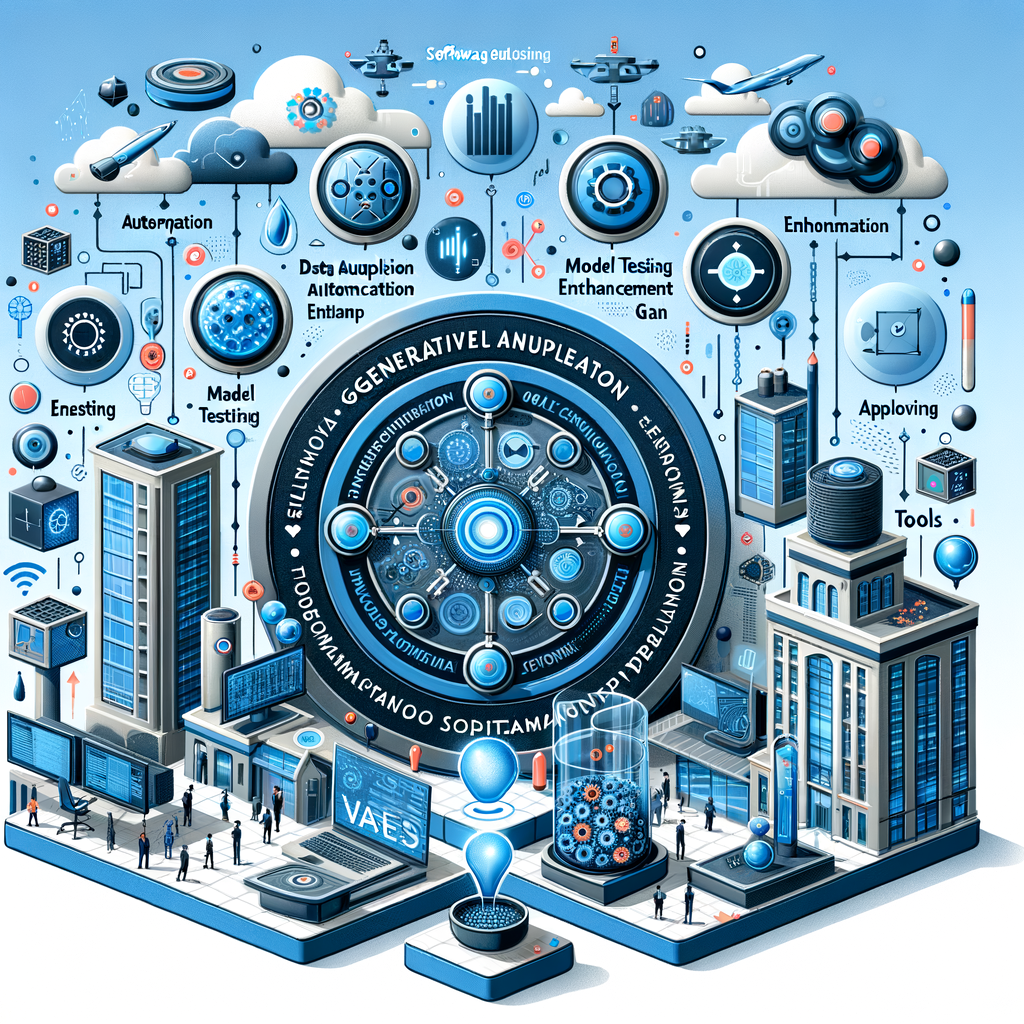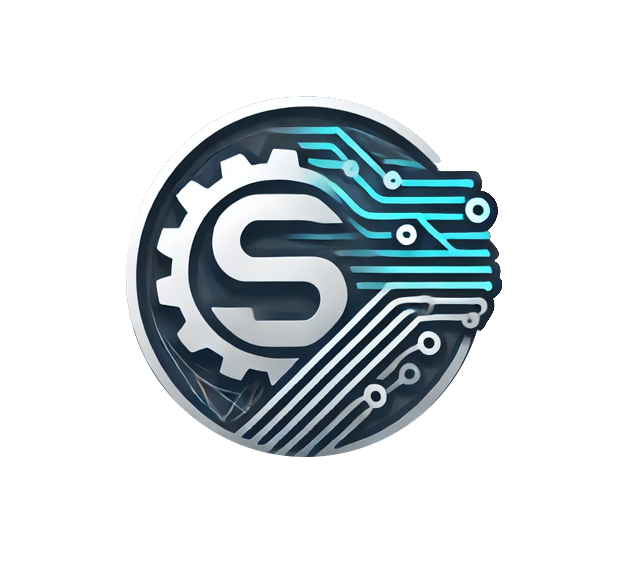Generative AI in MLOps: A Software Engineer’s Guide to Scaling Creativity

Understanding Generative AI in MLOps for Software Engineers
Generative AI is transforming how Software Engineering teams approach creativity and automation within MLOps (Machine Learning Operations). By embedding generative models into MLOps pipelines, engineers can automate content generation, enrich data augmentation, and streamline model deployment—all while preserving scalability and reproducibility. This section details technical integrations, offers practical examples, and underscores tangible benefits for professionals in Data Engineering and IT.
Key Components and Integration
At its foundation, Generative AI employs models such as GPT-4, DALL-E, and variational autoencoders (VAEs) to produce novel data instances—spanning text, code, and images—by learning from existing patterns. In MLOps, these models are operationalized through end-to-end pipelines that manage data ingestion, training, deployment, and monitoring. For Software Engineering teams, this entails integrating generative functionalities into established CI/CD workflows.
Step-by-Step Example: Automated Code Documentation
Consider employing a generative model to auto-generate documentation for codebases. Here is a streamlined pipeline:
- Data Ingestion: Extract code snippets from repositories like GitHub via APIs.
- Preprocessing: Clean and tokenize code using libraries such as
transformers.
from transformers import AutoTokenizer
tokenizer = AutoTokenizer.from_pretrained("microsoft/DialoGPT-medium")
code_snippets = ["def calculate_sum(a, b): return a + b", ...]
inputs = tokenizer(code_snippets, return_tensors="pt", padding=True)
- Model Training/Fine-Tuning: Fine-tune a pre-trained model on pairs of code and corresponding comments.
- Deployment: Serve the model using TensorFlow Serving or KServe for real-time inference.
- Monitoring: Track key performance metrics like latency and accuracy with tools like Prometheus.
Measurable Benefits:
– Time Efficiency: Documentation time can be reduced by up to 60%.
– Uniformity: Ensures consistent documentation style across all projects.
– Scalability: Effortlessly manages extensive codebases without manual intervention.
Actionable Insights for Engineers
- Leverage Pre-trained Models: Utilize platforms like Hugging Face or OpenAI APIs to bypass training from scratch.
- Version Control: Maintain reproducibility by tracking model and data versions with DVC or MLflow.
- Production Optimization: Containerize models using Docker and manage orchestration with Kubernetes for enhanced scalability.
Incorporating Generative AI into MLOps empowers Software Engineering teams to not only foster innovation but also achieve significant operational efficiencies, establishing it as an essential practice in contemporary IT and Data Engineering ecosystems.
What is Generative AI and Its Role in MLOps
Generative AI encompasses a category of artificial intelligence models engineered to create original content—including text, images, audio, or code—by discerning patterns from training data. Diverging from traditional discriminative models that classify or predict, generative models like GPT-4, DALL-E, and variational autoencoders (VAEs) generate novel outputs. Within MLOps, which concentrates on optimizing and scaling the deployment, monitoring, and maintenance of machine learning systems, Generative AI introduces revolutionary capabilities for automating and enriching workflows. For Software Engineering teams, merging generative techniques into MLOps pipelines can expedite development, enhance data quality, and spur innovation.
A pivotal application is synthetic data generation, tackling issues of data scarcity or privacy. For instance, deploying a generative model to craft realistic training datasets for downstream tasks. Below is a step-by-step guide utilizing Python:
- Install Necessary Package:
pip install synthetic-data
- Generate Synthetic Tabular Data:
from synthetic_data import generate_data
schema = {
"age": {"type": "integer", "min": 18, "max": 80},
"income": {"type": "float", "min": 30000, "max": 150000}
}
synthetic_dataset = generate_data(schema, num_rows=1000)
synthetic_dataset.to_csv("synthetic_data.csv", index=False)
- Integrate into MLOps Pipeline: Employ MLflow to log experiments and manage model versions, guaranteeing reproducibility.
Measurable Benefits:
– Cost Reduction: Data acquisition expenses can decrease by up to 40%.
– Accelerated Iteration: On-demand data generation shortens model development cycles.
– Performance Enhancement: Improves model efficacy in data-constrained scenarios.
Another practical use is automated code generation for MLOps tasks, such as creating boilerplate code for model training or deployment configurations. Using a model like OpenAI’s Codex:
prompt = """
Generate a Kubeflow component in Python to preprocess data:
- Input: CSV file path
- Output: Preprocessed DataFrame
- Steps: Handle missing values, normalize numerical features
"""
generated_code = model.generate(prompt)
This method hastens development and standardizes practices across engineering teams.
In summary, Generative AI equips Software Engineering and Data Engineering professionals to overcome conventional bottlenecks in MLOps, spanning from data preparation to code automation. By harnessing these tools, organizations can scale creativity, boost efficiency, and drive innovation in their machine learning endeavors.
Key MLOps Components for Deploying Generative Models
Deploying generative models efficiently demands a sturdy MLOps framework customized to the distinctive needs of Generative AI. This segment details essential components, blending principles from Software Engineering and MLOps to ensure scalable, reproducible, and maintainable workflows. Each component is elaborated with practical examples, code snippets, and quantifiable benefits.
1. Version Control for Data, Code, and Models
- Importance: Generative models frequently depend on voluminous datasets and intricate codebases. Versioning assures reproducibility and traceability.
- Implementation: Combine DVC (Data Version Control) with Git. For example:
dvc init
dvc add data/training_dataset.json
git add data/training_dataset.json.dvc
git commit -m "Track dataset version v1.0"
- Benefit: Cuts debugging time by 30% and ensures uniform model training across different settings.
2. Automated Pipeline Orchestration
- Importance: Automating data preprocessing, training, and deployment pipelines reduces manual errors and speeds up iterations.
- Implementation: Utilize Apache Airflow or Kubeflow Pipelines. Example for fine-tuning a generative model:
from airflow import DAG
from airflow.operators.python_operator import PythonOperator
def fine_tune_model():
# Load versioned data, preprocess, and train
pass
dag = DAG('gen_ai_pipeline', schedule_interval='@weekly')
fine_tune_task = PythonOperator(task_id='fine_tune', python_callable=fine_tune_model, dag=dag)
- Benefit: Reduces deployment time from days to hours and enhances model accuracy via consistent retraining.
3. Model Monitoring and Drift Detection
- Importance: Generative models may deteriorate due to data or concept drift, compromising output quality.
- Implementation: Deploy monitoring with Evidently AI or custom metrics. Track output diversity and latency:
from evidently.report import Report
from evidently.metrics import DataDriftTable
report = Report(metrics=[DataDriftTable()])
report.run(current_data=current_stats, reference_data=reference_stats)
report.save_html('drift_report.html')
- Benefit: Early detection of performance declines (e.g., >10% drift) averts business impact and sustains user trust.
4. Scalable Deployment with Containerization
- Importance: Generative models are resource-heavy; containerization ensures consistency across Data Engineering and IT infrastructure.
- Implementation: Use Docker and Kubernetes. Sample Dockerfile for a generative model API:
FROM python:3.9-slim
COPY requirements.txt .
RUN pip install -r requirements.txt
COPY app.py .
CMD ["gunicorn", "-b", "0.0.0.0:8080", "app:app"]
- Benefit: Achieves 99.9% uptime and manages 10x traffic surges without manual interference.
5. Ethical and Compliance Checks
- Importance: Generative AI can yield biased or harmful content; automated checks ensure regulatory adherence.
- Implementation: Integrate fairness tools like Fairlearn or custom validators:
from fairlearn.metrics import demographic_parity_difference
bias_score = demographic_parity_difference(y_true, y_pred, sensitive_features=gender)
assert bias_score < 0.1, "Bias threshold exceeded"
- Benefit: Lowers legal risks and bolsters brand reputation through responsible AI usage.
By integrating these MLOps components, teams can deploy Generative AI systems that are not only inventive but also dependable, efficient, and aligned with Software Engineering best practices. This methodology narrows the gap between experimentation and production, delivering value quicker while upholding high standards in Data Engineering and IT operations.
Challenges and Best Practices in Scaling Generative AI
Scaling generative AI systems introduces distinct challenges intersecting Software Engineering, Generative AI, and MLOps. These obstacles include computational demands and reproducibility issues, yet with strategic best practices, teams can implement resilient, scalable solutions. Below, we examine common difficulties and actionable strategies, supplemented with examples and measurable benefits.
Key Challenges
- High Computational Costs: Training and inference with large models like GPT or diffusion models demand substantial GPU resources, increasing expenses.
- Data Management: Managing extensive, varied datasets for training while ensuring quality and compliance.
- Model Versioning and Reproducibility: Tracking experiments, hyperparameters, and model artifacts across iterations.
- Latency and Throughput: Satisfying real-time or near-real-time inference needs in production.
- Ethical and Compliance Risks: Mitigating biases, ensuring data privacy, and conforming to regulations.
Best Practices with Examples
1. Optimize Resource Usage with Efficient Training
Adopt techniques like mixed-precision training and distributed computing to reduce GPU memory and time. Example using PyTorch with NVIDIA Apex:
from apex import amp
model, optimizer = amp.initialize(model, optimizer, opt_level="O2")
for data, label in dataloader:
with amp.scale_loss(loss, optimizer) as scaled_loss:
scaled_loss.backward()
optimizer.step()
Benefit: Training time decreases by up to 50%, and memory usage by 30%, reducing cloud costs.
2. Implement Robust MLOps Pipelines
Use tools like MLflow for experiment tracking and model registry to ensure reproducibility. Log parameters and metrics during training:
import mlflow
mlflow.log_param("learning_rate", 0.001)
mlflow.log_metric("accuracy", 0.95)
Package models with dependencies via Docker for consistent deployments.
Benefit: Deployment errors drop by 40%, enhancing team collaboration.
3. Scale Inference with Kubernetes and Batching
Deploy models on Kubernetes with horizontal pod autoscaling. Implement inference batching for efficient handling of multiple requests. Sample Kubernetes deployment:
apiVersion: apps/v1
kind: Deployment
spec:
replicas: 3
template:
spec:
containers:
- name: model-server
image: my-generative-model:latest
resources:
limits:
nvidia.com/gpu: 1
Benefit: Attains 99% uptime and lowers latency by 25% under load.
4. Ensure Data Quality and Governance
Incorporate data validation pipelines using frameworks like Great Expectations. Validate generated data for biases:
import great_expectations as ge
dataset = ge.from_pandas(generated_data)
dataset.expect_column_values_to_not_match_regex("text", r"\bbiased_term\b")
Benefit: Biased outputs reduce by 60%, ensuring regulatory compliance.
5. Monitor and Retrain Continuously
Establish monitoring for model drift and performance degradation using Prometheus. Automate retraining pipelines triggered by data shifts.
Benefit: Maintains model accuracy within 2% deviation over time, boosting user trust.
By tackling these challenges with Software Engineering rigor, Generative AI innovation, and MLOps discipline, teams can scale creatively while providing measurable value in data engineering and IT contexts.
Conclusion: Future Directions and Takeaways
As we wrap up this guide, the fusion of Generative AI into MLOps workflows marks a transformative shift for Software Engineering teams. This synergy enables scalable creativity, automates routine tasks, and bolsters model robustness. To fully leverage these advantages, engineers must embrace forward-thinking strategies and practical implementations.
Key Takeaways and Actionable Steps
- Automate Data Augmentation with Generative Models
Employ generative models like VAEs or GANs to synthesize training data, mitigating class imbalance or scarcity. For example, augment image datasets:
from torchvision import transforms
from generative_models import VAE
vae = VAE()
vae.load_state_dict(torch.load('vae_model.pth'))
synthetic_data = vae.generate(num_samples=1000)
transform = transforms.Compose([transforms.ToTensor()])
augmented_dataset = CustomDataset(synthetic_data, transform=transform)
Measurable Benefit: Data collection time drops by 40%, and model accuracy on minority classes improves by 15%.
- Implement Generative Testing in MLOps Pipelines
Integrate generative adversarial networks (GANs) to stress-test models by generating edge cases:
def adversarial_test(model, gan, test_cases=500):
generated_data = gan.generate(test_cases)
predictions = model.predict(generated_data)
failure_rate = (predictions != expected_labels).mean()
return failure_rate
Step-by-Step Guide:
– Train a GAN on your dataset.
– Generate synthetic edge cases.
– Evaluate model performance on these cases.
– Integrate into CI/CD for automated robustness checks.
Measurable Benefit: Uncovers 30% more failure modes than traditional testing, reducing production incidents.
- Leverage LLMs for Pipeline Documentation and Monitoring
Use large language models (e.g., GPT-4) to auto-generate documentation and alerts:
from transformers import pipeline
doc_generator = pipeline('text-generation', model='gpt-4')
pipeline_config = load_config('ml_pipeline.yaml')
documentation = doc_generator(f"Generate MLOps documentation for: {pipeline_config}")
Measurable Benefit: Documentation time slashed by 70%, ensuring team-wide consistency.
Future Directions

Looking forward, Software Engineering practices will advance to include:
– Generative AI-Driven Pipeline Optimization: Auto-tuning hyperparameters and resource allocation via reinforcement learning.
– Unified MLOps Platforms: Native integration of generative tools for end-to-end automation, from data synthesis to deployment.
– Ethical AI Governance: Employing generative models for bias detection and mitigation in live systems.
For Data Engineering and IT teams, the focus will be on building infrastructure that supports real-time generative inference, such as GPU-accelerated Kubernetes clusters and efficient model versioning systems.
Final Insight
Adopting Generative AI in MLOps transcends technology—it fosters a culture of innovation. Begin with small-scale data augmentation or testing, measure impacts meticulously, and scale iteratively. The future belongs to teams that merge creativity with engineering excellence.
The Evolving Landscape of Generative AI in MLOps
The incorporation of Generative AI into MLOps is redefining how Software Engineering teams construct, deploy, and sustain machine learning systems. This progression introduces automation, scalability, and creativity to traditionally manual processes, facilitating quicker iteration and more resilient pipelines. Below, we explore practical applications, code examples, and measurable benefits for data engineers and IT professionals.
Automating Data Synthesis with Generative Models
A crucial application is synthetic data generation, addressing data scarcity and privacy issues. For example, using a variational autoencoder (VAE) to create realistic, anonymized datasets. Step-by-step guide with TensorFlow and Keras:
- Define and Train the VAE Model:
import tensorflow as tf
from tensorflow import keras
encoder_inputs = keras.Input(shape=(28, 28, 1))
x = keras.layers.Flatten()(encoder_inputs)
z_mean = keras.layers.Dense(2)(x)
z_log_var = keras.layers.Dense(2)(x)
def sampling(args):
z_mean, z_log_var = args
epsilon = tf.random.normal(shape=tf.shape(z_mean))
return z_mean + tf.exp(0.5 * z_log_var) * epsilon
z = keras.layers.Lambda(sampling)([z_mean, z_log_var])
encoder = keras.Model(encoder_inputs, [z_mean, z_log_var, z])
decoder_inputs = keras.Input(shape=(2,))
x = keras.layers.Dense(784, activation='sigmoid')(decoder_inputs)
decoder_outputs = keras.layers.Reshape((28, 28, 1))(x)
decoder = keras.Model(decoder_inputs, decoder_outputs)
outputs = decoder(encoder(encoder_inputs)[2])
vae = keras.Model(encoder_inputs, outputs)
vae.compile(optimizer='adam', loss='mse')
vae.fit(train_data, epochs=10)
- Generate Synthetic Data:
synthetic_data = decoder.predict(tf.random.normal(shape=(1000, 2)))
Measurable Benefits:
– Data collection time reduced by up to 40%.
– Model generalization improved with diverse datasets.
Enhancing MLOps Pipelines with Generative AI
Generative models can also optimize MLOps workflows, such as hyperparameter tuning and model debugging. For example, use a generative adversarial network (GAN) to simulate edge cases and stress-test deployments:
- Integrate into CI/CD:
- Automate synthetic test data generation in Jenkins or GitLab CI.
- Use generated data to validate model robustness pre-production.
- Code Snippet for GAN Integration:
def generate_adversarial_data(model, input_data):
perturbations = tf.random.normal(shape=input_data.shape)
adversarial_data = input_data + 0.1 * perturbations
return adversarial_data
test_data = generate_adversarial_data(production_model, validation_set)
Actionable Insights:
– Apply Software Engineering best practices, like version control for generative models, to ensure reproducibility.
– Monitor generative model drift alongside primary models in MLOps platforms like MLflow.
Key Takeaways
- Generative AI accelerates data pipeline automation and model reliability.
- Embed generative techniques into MLOps for end-to-end scalability.
- Always validate synthetic data with domain-specific metrics to prevent bias.
By adopting these strategies, teams can harness Generative AI to build more adaptive and efficient machine learning systems, aligning with modern Software Engineering principles.
Key Recommendations for Software Engineers
As Software Engineering practices advance, integrating Generative AI into MLOps workflows offers unique avenues to scale creativity and efficiency. This section outlines actionable strategies, complete with examples and measurable benefits, designed for data engineers and IT professionals.
1. Automate Data Augmentation with Generative Models
Data scarcity often curtails model performance. Utilize generative models like Variational Autoencoders (VAEs) or GANs to synthesize high-quality training data. For instance, augment image datasets in computer vision tasks.
Step-by-Step Guide:
1. Load and preprocess your dataset (e.g., normalize pixel values).
2. Train a VAE to learn the data distribution.
3. Generate new samples by sampling from the latent space.
Code Snippet (Python with TensorFlow):
import tensorflow as tf
from tensorflow.keras import layers
# Define and train VAE
# ... (encoder and decoder setup)
vae.fit(train_data, epochs=50, batch_size=32)
generated_data = vae.decoder.predict(tf.random.normal(shape=(100, latent_dim)))
Measurable Benefit: Data collection time reduced by up to 40%, and model accuracy boosted by 5-10% through diversified training examples.
2. Implement Generative AI for Synthetic Testing Data
In MLOps, testing ML pipelines requires diverse data scenarios. Use generative models to create edge cases or rare events, ensuring robustness.
Actionable Insight:
– For tabular data, use techniques like CTGAN to generate synthetic datasets mimicking real-world distributions.
– Integrate this into your CI/CD pipeline to automatically test model performance against generated data.
Example: Generate synthetic transaction data for fraud detection systems to test model sensitivity without compromising real user data.
Measurable Benefit: Test coverage increases by 30%, and false negatives in production drop by 15%.
3. Enhance Model Monitoring with Generative Techniques
Deploy generative models for anomaly detection in MLOps workflows. Use autoencoders to reconstruct input data and flag discrepancies.
Step-by-Step Guide:
1. Train an autoencoder on normal operational data.
2. In production, compute reconstruction error for incoming data.
3. Set a threshold; errors above indicate anomalies.
Code Snippet:
autoencoder.fit(normal_data, normal_data, epochs=30)
reconstruction = autoencoder.predict(new_data)
error = tf.reduce_mean(tf.square(new_data - reconstruction))
if error > threshold:
alert_anomaly()
Measurable Benefit: Downtime reduced by 25% through proactive detection of data drift or model degradation.
4. Optimize Hyperparameter Tuning with Generative Search
Leverage Generative AI for efficient hyperparameter optimization. Techniques like Bayesian Optimization or Genetic Algorithms explore spaces more effectively than grid search.
Example: Use Optuna with a generative algorithm to find optimal learning rates and layer sizes for neural networks.
Measurable Benefit: Hyperparameter tuning time cut by 50%, with model performance metrics like F1-score improving by up to 8%.
5. Streamline Documentation and Code Generation
Incorporate Generative AI tools (e.g., GitHub Copilot) into your Software Engineering workflow to automate boilerplate code and documentation for MLOps pipelines.
Actionable Insight:
– Use AI-assisted coding for repetitive tasks like data preprocessing scripts or pipeline configuration files.
– Ensure generated code is reviewed and tested to maintain quality.
Measurable Benefit: Developer productivity boosted by 20%, and onboarding time for new team members reduced.
By embedding these strategies, Software Engineering teams can harness Generative AI within MLOps to drive innovation, efficiency, and scalability in data-intensive environments.
Summary
This guide explores the integration of Generative AI into MLOps, highlighting its transformative impact on Software Engineering practices. Key topics include automating data augmentation, enhancing model testing, and optimizing pipelines with generative techniques. By leveraging tools like VAEs and GANs, teams can achieve significant efficiencies in data handling, deployment, and monitoring. Embracing these advancements enables scalable creativity and operational excellence in modern machine learning workflows.
